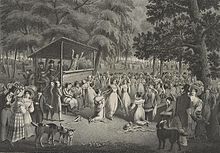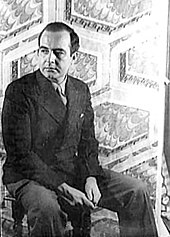
A hymn is a type of song, and partially synonymous with devotional song, specifically written for the purpose of adoration or prayer, and typically addressed to a deity or deities, or to a prominent figure or personification. The word hymn derives from Greek ὕμνος (hymnos), which means "a song of praise". A writer of hymns is known as a hymnist. The singing or composition of hymns is called hymnody. Collections of hymns are known as hymnals or hymn books. Hymns may or may not include instrumental accompaniment.

A hymnal or hymnary is a collection of hymns, usually in the form of a book, called a hymnbook. They are used in congregational singing. A hymnal may contain only hymn texts ; written melodies are extra, and more recently harmony parts have also been provided.

"Be Thou My Vision" is a traditional Christian hymn of Irish origin. The words are based on a Middle Irish poem that has traditionally been attributed to Dallán Forgaill.
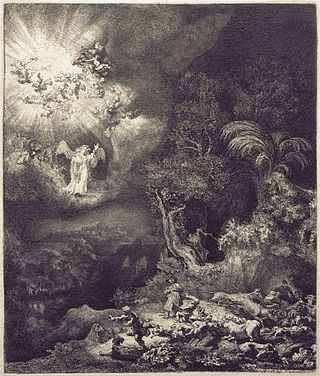
"It Came Upon the Midnight Clear", sometimes rendered as "It Came Upon a Midnight Clear", is an 1849 poem and Christmas carol written by Edmund Sears, pastor of the Unitarian Church in Wayland, Massachusetts. In 1850, Sears' lyrics were set to "Carol", a tune written for the poem the same year at his request, by Richard Storrs Willis. This pairing remains the most popular in the United States, while in Commonwealth countries, the lyrics are set to "Noel", a later adaptation by Arthur Sullivan from an English melody.
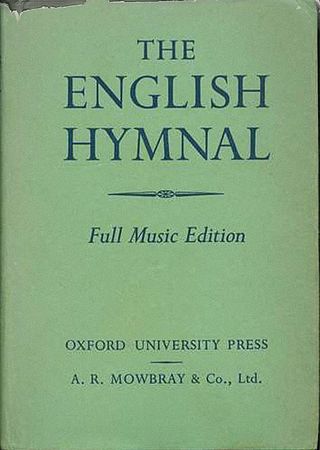
The English Hymnal is a hymn book which was published in 1906 for the Church of England by Oxford University Press. It was edited by the clergyman and writer Percy Dearmer and the composer and music historian Ralph Vaughan Williams, and was a significant publication in the history of Anglican church music.
"How Can I Keep From Singing?" is an American folksong originating as a Christian hymn. The author of the lyrics was known only as 'Pauline T', and the original tune was composed by American Baptist minister Robert Lowry. The song is frequently, though erroneously, cited as a traditional Quaker or Shaker hymn. The original composition has now entered into the public domain, and appears in several hymnals and song collections, both in its original form and with a revised text that omits most of the explicitly Christian content and adds a verse about solidarity in the face of oppression. Though it was not originally a Quaker hymn, Quakers adopted it as their own in the twentieth century and use it widely today.
Kingdom songs are the hymns sung by Jehovah's Witnesses at their religious meetings. Since 1879, the Watch Tower Society has published hymnal lyrics; by the 1920s they had published hundreds of adapted and original songs, and by the 1930s they referred to these as "Kingdom songs" in reference to God's Kingdom.
"How Great Thou Art" is a Christian hymn based on an original Swedish hymn entitled "O Store Gud" written in 1885 by Carl Boberg (1859–1940). The English version of the hymn and its title are a loose translation by the English missionary Stuart K. Hine from 1949. The hymn was popularised by George Beverly Shea and Cliff Barrows during Billy Graham's crusades. It was voted the British public's favourite hymn by BBC's Songs of Praise. "How Great Thou Art" was ranked second on a list of the favourite hymns of all time in a survey by Christianity Today magazine in 2001 and in a nationwide poll by Songs Of Praise in 2019.
The Sacred Harp is a shape note tunebook, originally compiled in 1844 by Benjamin Franklin White and Elisha J. King in Georgia and used to this day in revised form by Sacred Harp singers throughout America and overseas. This article is a historical overview and listing of the composers and poets who wrote the songs and texts of The Sacred Harp.

Alice Parker is an American composer, arranger, conductor, and teacher. She has authored five operas, eleven song-cycles, thirty-three cantatas, eleven works for chorus and orchestra, forty-seven choral suites, and more than forty hymns, all original compositions. Also to be noted are wealth of arrangements based on pre-existing folk-songs and hymns, many of which were produced in collaboration with Robert Shaw. Parker is best known for these kinds of arrangements of spirituals, mountain hymns, and folk songs, early-American hymns, and international folk-songs, most notably in French, Spanish, Hebrew, and Ladino.
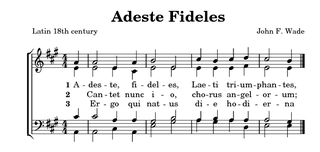
A hymn tune is the melody of a musical composition to which a hymn text is sung. Musically speaking, a hymn is generally understood to have four-part harmony, a fast harmonic rhythm, with or without refrain or chorus.
"As with Gladness Men of Old" is an Epiphany hymn, written by William Chatterton Dix on 6 January 1859 (Epiphany) while he was ill in bed. Though considered by many as a Christmas carol, it is found in the Epiphany section of many hymnals and still used by many churches. The music was adapted by William Henry Monk in 1861 from a tune written by Conrad Kocher in 1838. The hymn is based on the visit of the Biblical magi in the Nativity of Jesus.
"Good Shepherd" is a traditional song, best known as recorded by Jefferson Airplane on their 1969 album Volunteers. It was arranged and sung by the group's lead guitarist Jorma Kaukonen, who described their interpretation of it as psychedelic folk-rock.
"Faith of our Fathers" is a Catholic hymn, written in 1849 by Frederick William Faber in memory of the Catholic Martyrs from the time of the establishment of the Church of England by Henry VIII and Elizabeth. Faber wrote two versions of the hymn: one with seven stanzas for Ireland, and another with four for England. The Irish version was sung at hurling matches until the 1960s.
The God of Abraham Praise is a Christian adaptation of the well known Jewish hymn "Yigdal", loosely translated and Christianised by the evangelist Thomas Olivers after a visit to the Great Synagogue of London in 1770. It was first published in 1772. The title of the hymn was based on a verse in the Book of Exodus: "I am the God of thy Father, the God of Abraham".
"Crown Him with Many Crowns" is an 1851 hymn with lyrics written by Matthew Bridges and Godfrey Thring and sung to the tune 'Diademata' by Sir George Job Elvey. The hymn appears in many hymnals.

"The Ballad of Captain Kidd" is an English song about Captain William Kidd, who was executed for piracy in London on May 23, 1701. It is listed as number 1900 in the Roud Folk Song Index.
"Praise to the Living God" is an American Judeo-Christian hymn written in 1884 by Max Landsberg and Newton Mann. It was revised in 1910 by William C. Gannett.

"The Babe in Bethlem's Manger", also called "The Babe in Bethlehem's Manger Laid", "Old Kentish Carol" and "The Saviour's Work", is an anonymous English folk Christmas carol celebrating the birth of Jesus in Bethlehem.
Hymnody in continental Europe developed from early liturgical music, especially Gregorian chant. Music became more complicated as embellishments and variations were added, along with influences from secular music. Although vernacular leisen and vernacular or mixed-language carols were sung in the Middle Ages, more vernacular hymnody emerged during the Protestant Reformation, although ecclesiastical Latin continued to be used after the Reformation. Since then, developments have shifted between isorhythmic, homorhythmic, and more rounded musical forms with some lilting. Theological underpinnings influenced the narrative point of view used, with Pietism especially encouraging the use of the first person singular. In the last several centuries, many songs from Evangelicalism have been translated from English into German.

